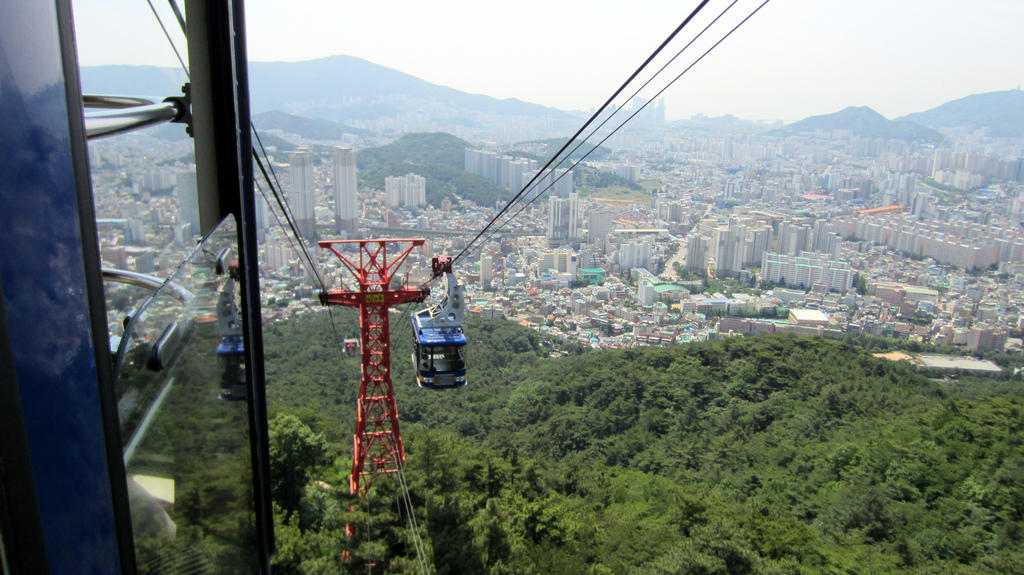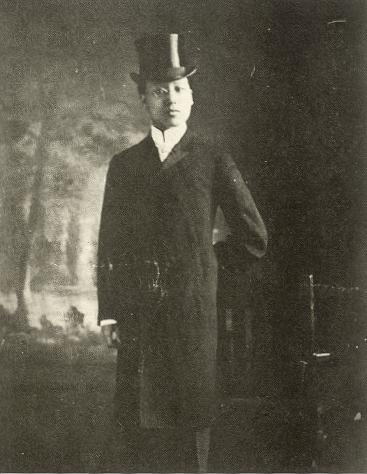|
Kim Seong-hwan
Kim Seong-hwan (8 October 1932 – 9 September 2019) was a South Korean artist and cartoonist, notable for having created and perpetuated the longest-running comic strip in Korea. Kim is also known by his pen name, which is ''Gobau'' ("strong rock"). The pseudonym dates from the summer of 1950 when he was trying to avoid getting into trouble with North Korea troops in Seoul. War artist In 1950, Kim was an 18-year-old student and a part-time magazine illustrator. When North Korean forces surged south, his drawings recorded the events which were happening around him.Salmon, Andrew"A Cartoonist at War: 'Gobau's' Korea, 1950,"''The Asia-Pacific Journal,'' July 13, 2009. Kim sketched refugees and soldiers who were fleeing the onslaught of North Korean troops. His artwork is a visual account of the lives of civilians swept up in the periphery of the Korean War. After Seoul was liberated in September 1950, Kim was employed as a war artist by the South Korean Ministry of Defense. C ... [...More Info...] [...Related Items...] OR: [Wikipedia] [Google] [Baidu] |
Kaesong
Kaesong (, ) is a special city in the southern part of North Korea (formerly in North Hwanghae Province), and the capital of Korea during the Taebong kingdom and subsequent Goryeo dynasty. The city is near the Kaesong Industrial Region close to the border with South Korea and contains the remains of the Manwoldae palace. Called Songdo while it was the ancient capital of Goryeo, the city prospered as a trade centre that produced Korean ginseng. Kaesong now functions as the DPRK's light industry centre. During the Japanese occupation from 1910 to 1945, the city was known by the Japanese pronunciation of its name, "Kaijō". Between 1945 and 1950, Kaesong was part of South Korea and under its control. The 1953 Korean Armistice Agreement left the city under North Korean control. Due to the city's proximity to the border with South Korea, Kaesong has hosted cross-border economic exchanges between the two countries as well as the jointly run Kaesong Industrial Region. As of 2009, ... [...More Info...] [...Related Items...] OR: [Wikipedia] [Google] [Baidu] |
Lee Ki-poong
Lee Ki-poong (20 December 1896 – 28 April 1960) was a South Korean politician and Vice President. He was the Minister of National Defense (May 7, 1951 – March 29, 1952) and Mayor of Seoul (June 6, 1949 – May 7, 1951). He was the leader of Liberal Party and supporter of Syngman Rhee (as a President). The Liberal Party held power from 1948 to 1960. On March 15, 1960, South Korea held a presidential election. The Liberal Party, which included Syngman Rhee and Lee Ki-poong, won by a very wide margin and was accused of electoral fraud. As a result, the April Revolution took place in April 1960. President Rhee resigned on April 26, 1960. Lee Ki-poong's family also resigned. On April 28, 1960, in an annex of Rhee's mansion, Lee Ki-poong's first son, Lee Kang-seok (1937 – April 28, 1960) shot Lee Ki-poong and his family and then killed himself in a murder–suicide. See also * April Revolution The April Revolution ( ko, 4.19 혁명), also called the April 19 Revolu ... [...More Info...] [...Related Items...] OR: [Wikipedia] [Google] [Baidu] |
Prisoners And Detainees Of South Korea
A prisoner (also known as an inmate or detainee) is a person who is deprived of liberty against their will. This can be by confinement, captivity, or forcible restraint. The term applies particularly to serving a prison sentence in a prison. English law "Prisoner" is a legal term for a person who is imprisoned. In section 1 of the Prison Security Act 1992, the word "prisoner" means any person for the time being in a prison as a result of any requirement imposed by a court or otherwise that he be detained in legal custody. "Prisoner" was a legal term for a person prosecuted for felony. It was not applicable to a person prosecuted for misdemeanour. The abolition of the distinction between felony and misdemeanour by section 1 of the Criminal Law Act 1967 has rendered this distinction obsolete. Glanville Williams described as "invidious" the practice of using the term "prisoner" in reference to a person who had not been convicted. History The earliest evidence of the ... [...More Info...] [...Related Items...] OR: [Wikipedia] [Google] [Baidu] |
2019 Deaths
This is a list of deaths of notable people, organised by year. New deaths articles are added to their respective month (e.g., Deaths in ) and then linked here. 2022 2021 2020 2019 2018 2017 2016 2015 2014 2013 2012 2011 2010 2009 2008 2007 2006 2005 2004 2003 2002 2001 2000 1999 1998 1997 1996 1995 1994 1993 1992 1991 1990 1989 1988 1987 See also * Lists of deaths by day * Deaths by year {{DEFAULTSORT:deaths by year ... [...More Info...] [...Related Items...] OR: [Wikipedia] [Google] [Baidu] |
1932 Births
Year 193 ( CXCIII) was a common year starting on Monday (link will display the full calendar) of the Julian calendar. At the time, it was known as the Year of the Consulship of Sosius and Ericius (or, less frequently, year 946 ''Ab urbe condita''). The denomination 193 for this year has been used since the early medieval period, when the Anno Domini calendar era became the prevalent method in Europe for naming years. Events By place Roman Empire * January 1 – Year of the Five Emperors: The Roman Senate chooses Publius Helvius Pertinax, against his will, to succeed the late Commodus as Emperor. Pertinax is forced to reorganize the handling of finances, which were wrecked under Commodus, to reestablish discipline in the Roman army, and to suspend the food programs established by Trajan, provoking the ire of the Praetorian Guard. * March 28 – Pertinax is assassinated by members of the Praetorian Guard, who storm the imperial palace. The Empire is a ... [...More Info...] [...Related Items...] OR: [Wikipedia] [Google] [Baidu] |
South Korean Cartoonists
South is one of the cardinal directions or compass points. The direction is the opposite of north and is perpendicular to both east and west. Etymology The word ''south'' comes from Old English ''sūþ'', from earlier Proto-Germanic ''*sunþaz'' ("south"), possibly related to the same Proto-Indo-European root that the word ''sun'' derived from. Some languages describe south in the same way, from the fact that it is the direction of the sun at noon (in the Northern Hemisphere), like Latin meridies 'noon, south' (from medius 'middle' + dies 'day', cf English meridional), while others describe south as the right-hand side of the rising sun, like Biblical Hebrew תֵּימָן teiman 'south' from יָמִין yamin 'right', Aramaic תַּימנַא taymna from יָמִין yamin 'right' and Syriac ܬܰܝܡܢܳܐ taymna from ܝܰܡܝܺܢܳܐ yamina (hence the name of Yemen, the land to the south/right of the Levant). Navigation By convention, the ''bottom or down-facing side'' of a ... [...More Info...] [...Related Items...] OR: [Wikipedia] [Google] [Baidu] |
South Korean War Artists
South is one of the cardinal directions or compass points. The direction is the opposite of north and is perpendicular to both east and west. Etymology The word ''south'' comes from Old English ''sūþ'', from earlier Proto-Germanic ''*sunþaz'' ("south"), possibly related to the same Proto-Indo-European root that the word ''sun'' derived from. Some languages describe south in the same way, from the fact that it is the direction of the sun at noon (in the Northern Hemisphere), like Latin meridies 'noon, south' (from medius 'middle' + dies 'day', cf English meridional), while others describe south as the right-hand side of the rising sun, like Biblical Hebrew תֵּימָן teiman 'south' from יָמִין yamin 'right', Aramaic תַּימנַא taymna from יָמִין yamin 'right' and Syriac ܬܰܝܡܢܳܐ taymna from ܝܰܡܝܺܢܳܐ yamina (hence the name of Yemen, the land to the south/right of the Levant). Navigation By convention, the ''bottom or down-facing sid ... [...More Info...] [...Related Items...] OR: [Wikipedia] [Google] [Baidu] |
Munhwa Ilbo
''Munhwa Ilbo'' is a daily newspaper in South Korea. It was established in August 1990, and printed its first issue on 1 November 1991. History ''Munhwa Ilbo'' was formerly owned by the Hyundai; however, Hyundai relinquished their control of the newspaper after the 1997 Asian Financial Crisis, at the same time as their competitor Hanwha gave up its own daily, the ''Kyunghyang Shinmun''. ''Munhwa Ilbo'' was Hyundai's first target for separation as it begin trying to slim down its vast business empire; the divestiture was part of a larger trend at the time of ''chaebol'' selling off non- core assets and reducing excessive diversification. The newspaper was officially established as a separate financial entity in May 1998. They opened an online edition in May 1997. Since April 2005, they have had a partnership for sharing of news content and photographs with '' No Cut News''. Incidents In January 2002, ''Munhwa Ilbo'' began to publish a serial novel ''Gangan Namja'' (강안� ... [...More Info...] [...Related Items...] OR: [Wikipedia] [Google] [Baidu] |
Blue House
Cheong Wa Dae ( ko, 청와대; Hanja: ; ), also known as the Blue House, is a public park that formerly served as the executive office and official residence of the president of South Korea from 1948 to 2022. It is located in the Jongno district of the South Korean capital Seoul. Cheong Wa Dae is in fact a complex of multiple buildings, built largely in the traditional Korean architectural style with some modern architectural elements and facilities. Cheong Wa Dae now consists of the Main Office Hall ''Bon-gwan'' ( ko, 본관; Hanja: ; lit. "Main House"), the Presidential Residence, the State Reception House ''Yeongbin-gwan'' ( ko, 영빈관; Hanja: ; lit. "Welcome-Guest House"), the ''Chunchu-gwan'' ( ko, 춘추관; Hanja: ; lit. "Spring-Autumn House") Press Hall, and the Secretariat Buildings. The entire complex covers approximately 250,000 square metres or 62 acres. Cheong Wa Dae was built upon the site of the royal garden of the Joseon Dynasty (1392–1910). While th ... [...More Info...] [...Related Items...] OR: [Wikipedia] [Google] [Baidu] |
Busan
Busan (), officially known as is South Korea's most populous city after Seoul, with a population of over 3.4 million inhabitants. Formerly romanized as Pusan, it is the economic, cultural and educational center of southeastern South Korea, with its port being Korea's busiest and the sixth-busiest in the world. The surrounding "Southeastern Maritime Industrial Region" (including Ulsan, South Gyeongsang, Daegu, and some of North Gyeongsang and South Jeolla) is South Korea's largest industrial area. The large volumes of port traffic and urban population in excess of 1 million make Busan a Large-Port metropolis using the Southampton System of Port-City classification . Busan is divided into 15 major administrative districts and a single county, together housing a population of approximately 3.6 million. The full metropolitan area, the Southeastern Maritime Industrial Region, has a population of approximately 8 million. The most densely built-up areas of the city are situat ... [...More Info...] [...Related Items...] OR: [Wikipedia] [Google] [Baidu] |
Syngman Rhee
Syngman Rhee (, ; 26 March 1875 – 19 July 1965) was a South Korean politician who served as the first president of South Korea from 1948 to 1960. Rhee was also the first and last president of the Provisional Government of the Republic of Korea from 1919 to his impeachment in 1925 and from 1947 to 1948. As President of South Korea, First Republic of Korea, Rhee's government was characterised by authoritarianism, limited economic development, and in the late 1950s growing political instability and public opposition. Authoritarianism continued in South Korea after Rhee's resignation until June Democratic Struggle, 1988, except for a few Second Republic of Korea, short breaks. Born in Hwanghae Province, Joseon, Rhee attended an American Methodist school, where he converted to Christianity. He became involved in Anti-Japanese sentiment in Korea, anti-Japanese activities after the 1894–95 First Sino-Japanese War and was imprisoned in 1899. Released in 1904, he moved to the Unite ... [...More Info...] [...Related Items...] OR: [Wikipedia] [Google] [Baidu] |





